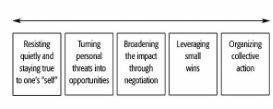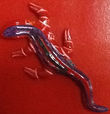LEADERSHIP
Where Am I Now... Short and Long Term Goals
There are a few goals I have in mind as to the next steps of STEM or better yet STEAM teaching. Science, Technology, Engineering, Art and Mathematic is a symphony that has the potential to bring about a more cohesive understanding of academic content. I learned this year, engineering is an important, yet essential piece in the education machine. Because teachers specialize in their own content area they often lose sight of the big picture of all that is possible for students to learn the many facets of skills and understandings that can enrich student learning. Thus, I think it is important that teachers take the opportunity to integrate subjects through a project based approach. This can be accomplished when students work on projects that would incorporate three or more subjects such as science, mathematics, and social science. This was evident in the work I did around integrating engineering practices in science. There are many layers that can be revealed through other subjects areas. I noticed the work I was doing was similar to the work other teachers were doing in other content areas. We could have worked together on some projects to create a more cohesive, meaningful learning experiences for students. Developing Project Based Learning (PBL) experiences for the students in my school is a long term/missional goal I have. In the meantime, I have taken steps to start this journey with the art teacher. We have collaborated to create a Periodic Table backsplash in the science lab. Each 8th grade student is designing one tile that will make up the periodic table. In art they will learn about the artistic elements of acrylic paints, glazing, and clay tiles.
Prezi: http://prezi.com/kkkjtl6ltm-o/?utm_campaign=share&utm_medium=copy
Prezi: http://prezi.com/kkkjtl6ltm-o/?utm_campaign=share&utm_medium=copy
Rocking the Boat by Debra Meyerson
Book Review and Reflection
In the Room
Leaders are present in every room, some are noticed with labels upon masthead, while others are quiet riots patiently waiting their turn to make a move. In either case we're all leaders in one way or another.
|
|
Click to set custom HTML
Leadership means taking action to bring about change or improvements.
you may leave a comment by placing the cursor over the plus sign below the image click the mic and simply say what you think. Hope to hear from you soon. |



